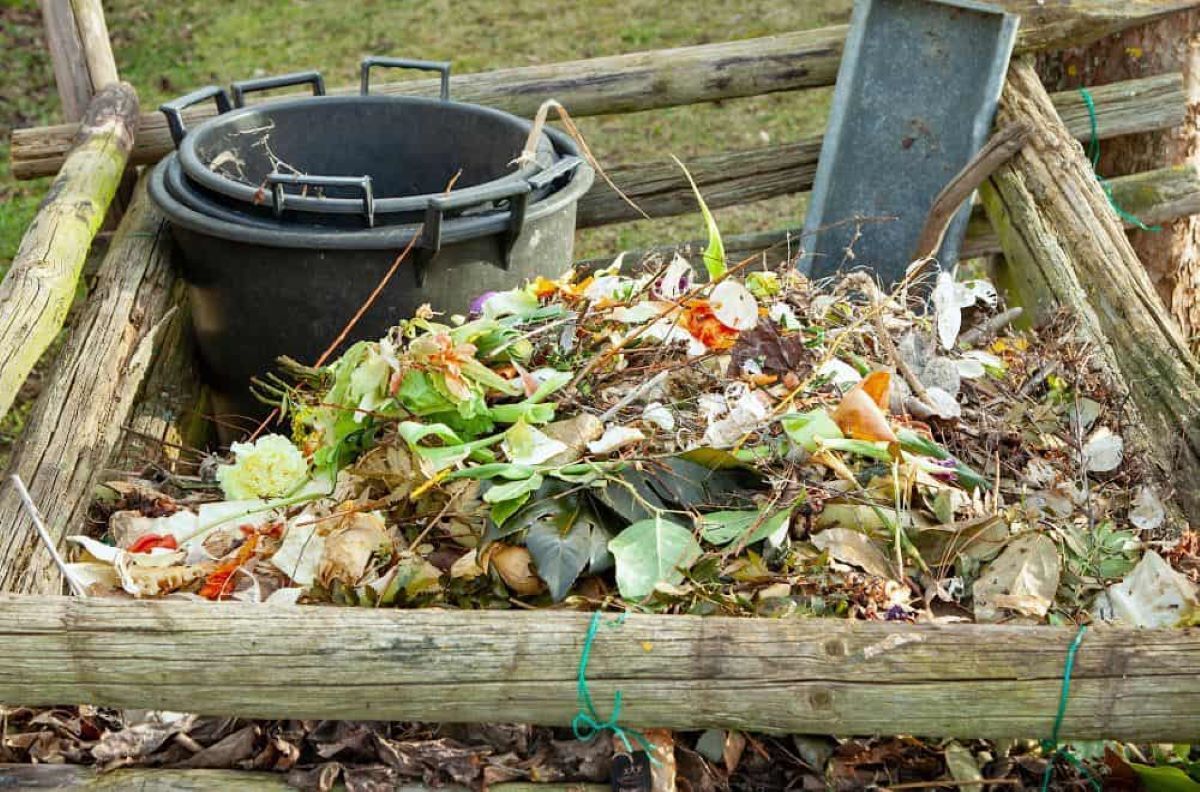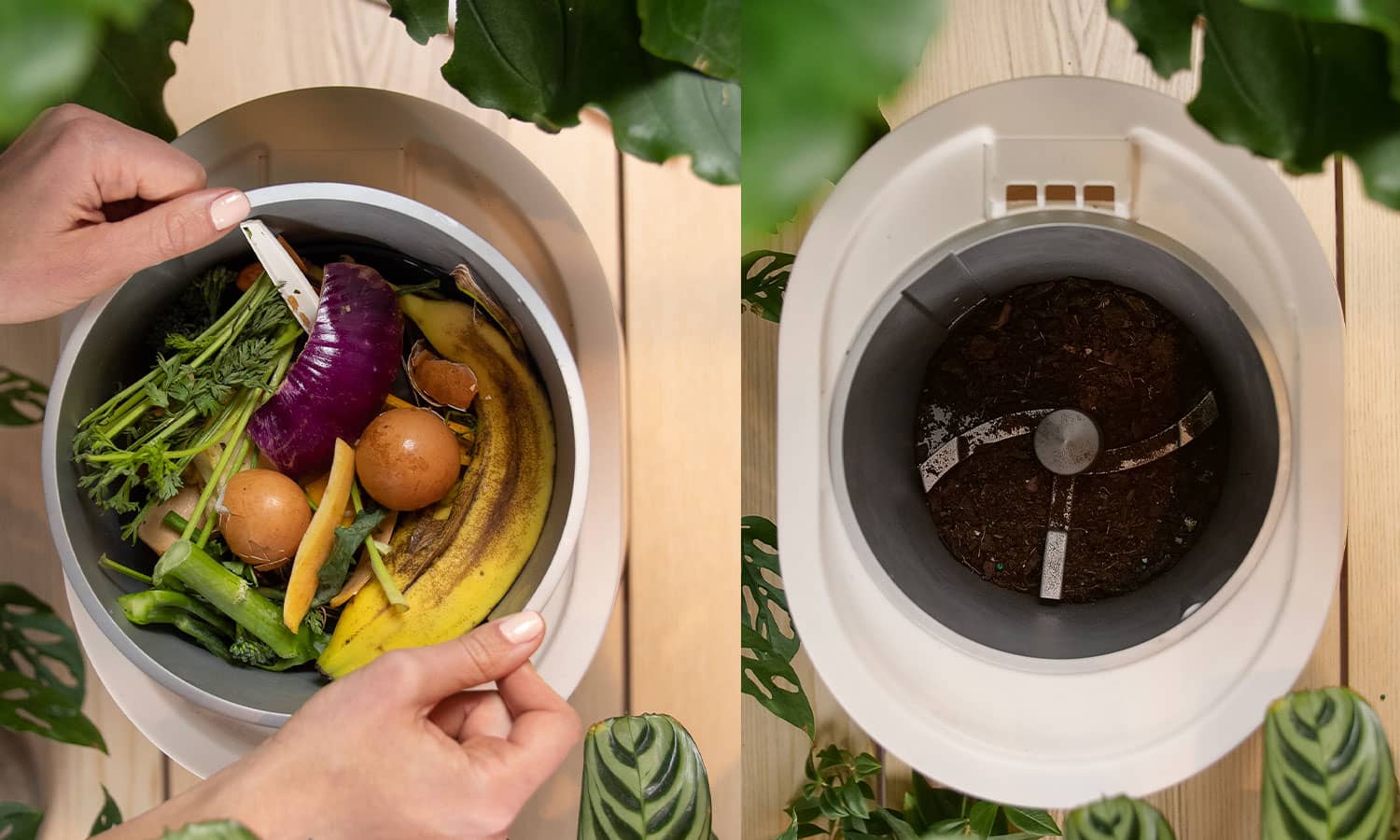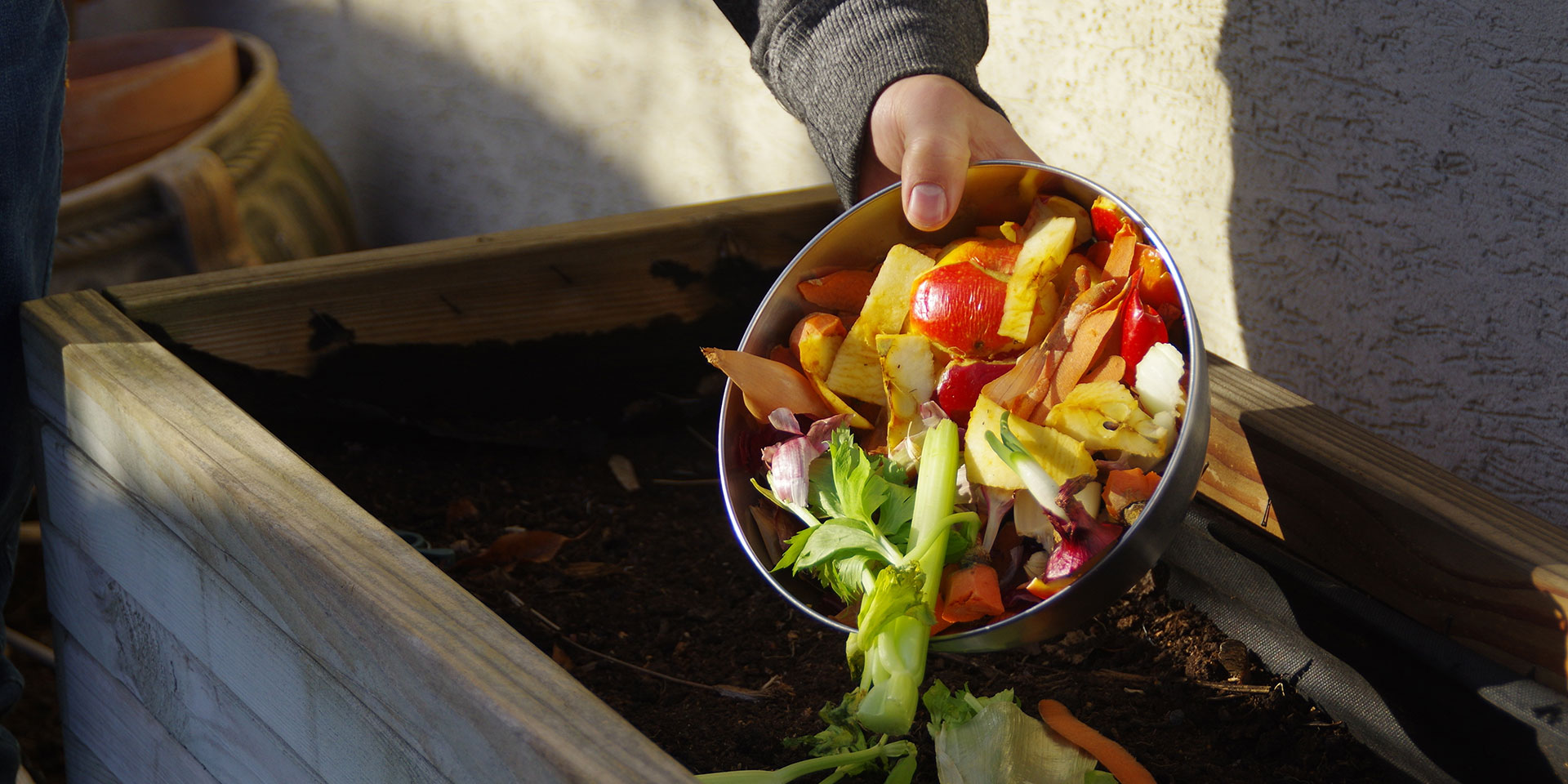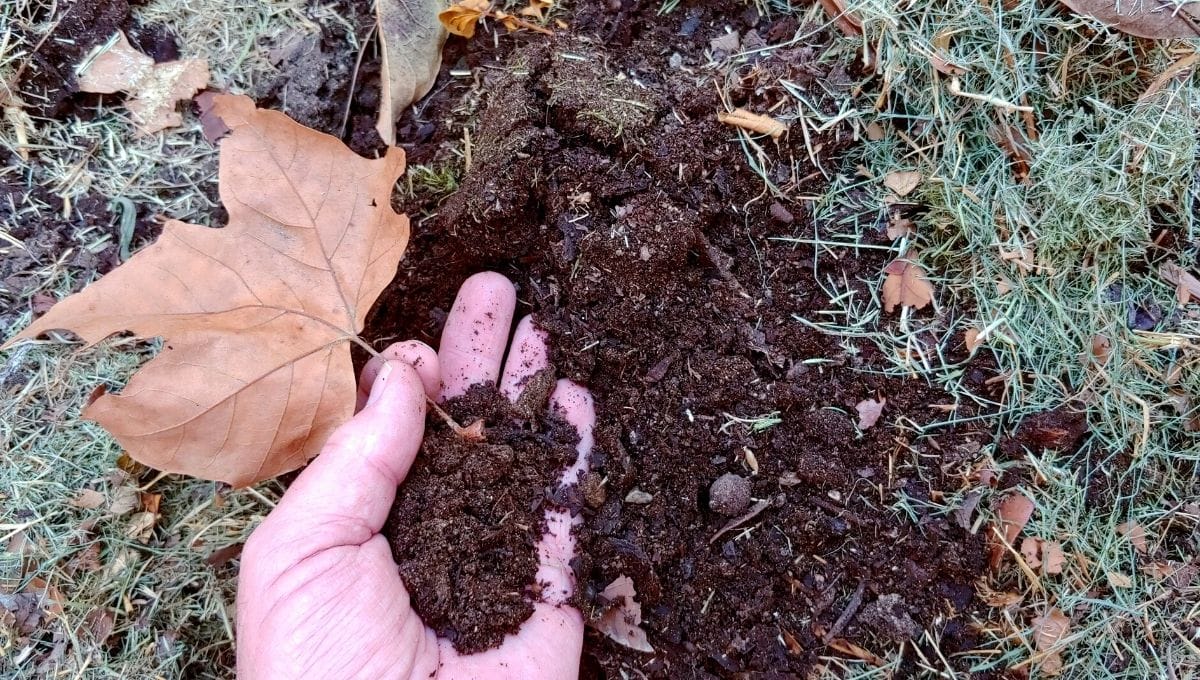Home>Gardening Tips and Tricks>Maximizing Yield>How Long Does Compost Last In Soil
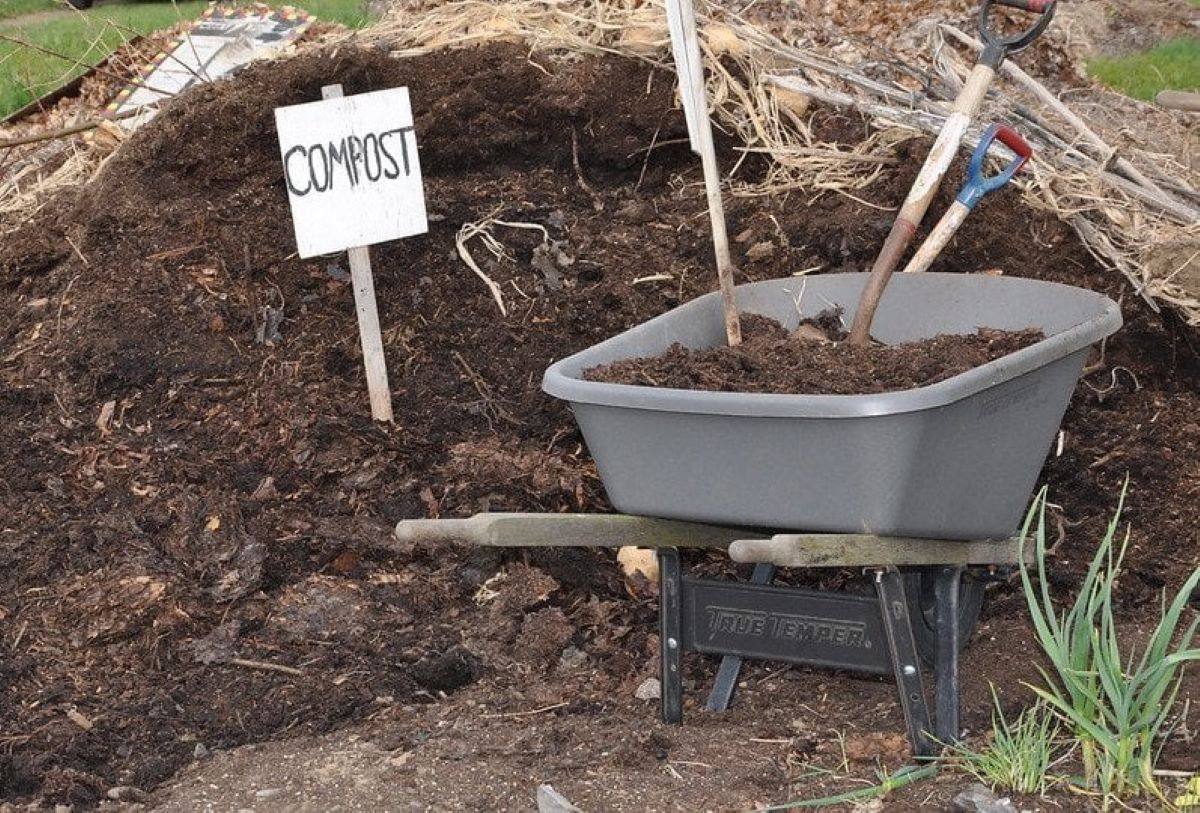

Maximizing Yield
How Long Does Compost Last In Soil
Modified: January 22, 2024
Maximize your yield with compost that lasts long in the soil. Discover how long compost can improve your soil health and increase your crop productivity.
(Many of the links in this article redirect to a specific reviewed product. Your purchase of these products through affiliate links helps to generate commission for Chicagolandgardening.com, at no extra cost. Learn more)
Table of Contents
- Introduction
- Factors Affecting Compost Decomposition
- Microorganism Activity in Composting
- Temperature and Moisture Levels in Compost Decomposition
- Types of Compost Materials and Their Decomposition Rates
- Compost Turnover and Aeration
- How Long Does Compost Last in Soil?
- Benefits of Incorporating Compost into Soil
- Conclusion
Introduction
Welcome to the world of composting! If you’re a gardener or someone who wants to make their soil more fertile, composting is a fantastic way to harness the power of organic waste and turn it into nutrient-rich soil amendment. Not only does composting help in reducing waste, but it also provides countless benefits to your garden and the environment at large.
Compost is the result of the decomposition of organic materials such as kitchen scraps, yard waste, and other organic matter. Through the process of composting, microorganisms break down these materials into a dark, crumbly substance that is packed with valuable nutrients. This nutrient-rich compost can then be added to your garden beds, potted plants, or lawns to improve soil structure, fertility, and overall plant health.
Composting is a natural process that has been happening in nature for centuries. However, by practicing composting at home, you can accelerate this process and have a ready supply of compost to enrich your garden soil. The length of time it takes for compost to fully decompose depends on various factors, such as the mix of organic materials, microorganism activity, and environmental conditions.
In this article, we will delve deeper into the factors that affect compost decomposition, such as microorganism activity, temperature, moisture levels, and the types of materials used for composting. We will also explore the benefits of incorporating compost into your soil and how long compost can last in the soil once applied. By understanding these concepts, you’ll be able to maximize the yield of your composting efforts and create a thriving garden ecosystem.
Factors Affecting Compost Decomposition
Compost decomposition is influenced by several factors that contribute to the breakdown of organic materials. Understanding these factors will help you optimize your composting process and achieve faster decomposition.
Microorganism Activity: Microorganisms, such as bacteria and fungi, are the workhorses of composting. They actively break down organic matter into simpler forms that can be absorbed by plants. The presence of a diverse microbial population is crucial for efficient decomposition. You can encourage microbial activity by adding a variety of organic materials to your compost pile, including kitchen scraps, yard waste, and even manure. Turning the compost regularly also helps distribute microorganisms throughout the pile.
Temperature and Moisture Levels: Compost microorganisms thrive within a specific temperature range. Ideally, the temperature in a compost pile should be between 120°F and 160°F (49°C and 71°C). This temperature range promotes optimal microbial activity and speeds up decomposition. To maintain the temperature, a balance of moisture is necessary. The moisture content of a compost pile should be around 50-60% to keep the microorganisms active. Adding water or dry organic material as needed can help regulate moisture levels.
Types of Compost Materials and Their Decomposition Rates: Different organic materials have varying decomposition rates. Generally, materials like fruit and vegetable scraps, coffee grounds, and grass clippings break down quickly due to their high nitrogen content. On the other hand, materials like woody branches and leaves take longer to decompose due to their high carbon content. To expedite decomposition, aim for a balance between high-nitrogen “green” materials and high-carbon “brown” materials in your compost pile.
Compost Turnover and Aeration: Regularly turning or aerating your compost pile is essential. This process helps mix the organic materials, ensuring that oxygen is distributed evenly among the microorganisms. Adequate oxygen supply promotes aerobic decomposition, which is faster and produces less odor. Turning the pile also helps to regulate temperature and moisture levels, preventing the compost from becoming too wet or compacted.
By considering these factors and optimizing them to suit your composting setup, you can accelerate the decomposition process and achieve a rich, dark finished compost in a shorter period of time. Remember, the key to successful composting lies in finding the right balance of microorganisms, temperature, moisture, and nutrient ratios.
Microorganism Activity in Composting
Microorganisms play a crucial role in the decomposition of organic materials in the composting process. These tiny living organisms, including bacteria, fungi, and actinomycetes, break down complex organic compounds into simpler forms that can be absorbed by plants. Understanding their role and creating an optimal environment for their activity is key to successful composting.
Bacteria: Bacteria are the primary decomposers in composting. They break down simple sugars, starches, and proteins into organic acids, carbon dioxide, water, and heat. The heat generated by bacterial activity helps to raise the temperature of the compost pile, which is essential for accelerating decomposition. Bacteria thrive in high-nitrogen environments, such as kitchen scraps and fresh grass clippings. They are responsible for the initial stage of decomposition in composting.
Fungi: Fungi play a complementary role to bacteria in the composting process. They are particularly efficient at breaking down lignin, a complex organic compound found in woody materials such as leaves and branches. Fungi produce enzymes that can break down lignin and cellulose, which are resistant to bacterial decomposition. As a result, fungi help to further break down organic materials and contribute to the overall decomposition of the compost pile. Fungal activity is promoted by providing a good balance of carbon-rich materials in the compost, such as dried leaves and woody materials.
Actinomycetes: Actinomycetes are a group of bacteria-like microorganisms that have properties of both bacteria and fungi. They are responsible for breaking down tough materials, such as cellulose, chitin, and lignin. Actinomycetes play a vital role in breaking down plant debris, such as straw and crop residues. They thrive in environments with high oxygen levels, so proper aeration of the compost pile is essential to promote their activity.
The activity of these microorganisms is influenced by several factors. The carbon-to-nitrogen ratio (C/N ratio) of the composting materials is crucial in determining the rate of decomposition. A C/N ratio of around 30:1 is ideal, as it provides a balance of nutrients for microorganisms. Proper moisture levels, between 50-60%, are also essential to keep the microorganisms active. Too much moisture can lead to anaerobic conditions and unpleasant odors, while too little moisture can hamper microbial activity.
Creating favorable conditions for microorganism activity is achieved through proper layering and mixing of compost materials, as well as regular turning of the compost pile to provide aeration. By promoting microbial activity, you can enhance the decomposition process and produce high-quality compost more quickly. Remember, a diverse and active microbial population is the key to successful composting.
Temperature and Moisture Levels in Compost Decomposition
Temperature and moisture levels play vital roles in the decomposition process of compost. These factors influence the activity of microorganisms responsible for breaking down organic materials and the overall speed of compost decomposition. Understanding the ideal temperature range and moisture levels will help you optimize these conditions for efficient composting.
Temperature: The temperature of a compost pile directly affects the speed of decomposition. Microorganisms thrive within specific temperature ranges, and different temperature ranges support different types of microorganisms. The composting process can be divided into three temperature phases: mesophilic, thermophilic, and maturation.
In the mesophilic phase, which occurs at temperatures between 70°F and 95°F (21°C and 35°C), mesophilic bacteria are the primary decomposers. This phase typically lasts for the first few days of composting. As the microorganisms break down organic materials, they generate heat, causing the temperature of the compost pile to rise.
The thermophilic phase, ranging from 120°F to 160°F (49°C to 71°C), is characterized by the dominance of thermophilic microorganisms. These heat-loving organisms include bacteria and fungi that thrive in high-temperature environments. The increased temperature during this phase helps to speed up the decomposition process and destroy weed seeds and pathogens. This phase can last several weeks to a few months, depending on various factors like the size of the compost pile and the carbon-to-nitrogen ratio.
Finally, during the maturation phase, the temperature gradually decreases as the majority of decomposition has occurred. The compost pile cools down, and mesophilic bacteria take over once again. This phase prepares the compost for use in the garden.
Moisture Levels: Moisture is essential for microbial activity and decomposition in compost. The moisture content of a compost pile should ideally be around 50-60%. Too much moisture can lead to anaerobic conditions where the compost becomes waterlogged, promoting the growth of undesirable microorganisms and causing unpleasant odors. On the other hand, insufficient moisture can inhibit microbial activity and slow down decomposition.
To maintain proper moisture levels, monitor the moisture content of your compost pile regularly. A simple test involves squeezing a handful of compost. If a few drops of water can be squeezed out, the moisture content is adequate. If the compost feels dry and crumbles easily, it lacks moisture and needs to be watered. Conversely, if excess water drips from the compost when squeezed, it is too wet, and you may need to turn the pile to improve aeration and drainage.
Ensuring a balance between temperature and moisture levels is crucial for optimal compost decomposition. Monitoring and adjusting these conditions as needed will help maintain the activity of microorganisms and promote efficient decomposition. By finding the sweet spot for temperature and moisture in your compost pile, you can produce nutrient-rich compost in a shorter time.
Types of Compost Materials and Their Decomposition Rates
The types of compost materials you use in your compost pile can have a significant impact on the overall decomposition process. Different organic materials have varying decomposition rates, which can affect the speed at which your compost turns into a nutrient-rich soil amendment. Understanding the decomposition rates of various compost materials will help you create a well-balanced compost pile and optimize the composting process.
Fruit and Vegetable Scraps: Fruit and vegetable scraps, such as peels, cores, and leftover produce, are considered high-nitrogen or “green” materials. These materials tend to decompose relatively quickly due to their high moisture content and nitrogen content. Composting fruit and vegetable scraps helps add valuable nutrients to your compost while reducing food waste.
Grass Clippings: Grass clippings are another high-nitrogen material that decomposes fairly rapidly. However, it is important to use grass clippings in moderation. Thick layers of fresh grass clippings can mat together and create an anaerobic environment, leading to odors and slow decomposition. To prevent this, layer grass clippings thinly and mix them with other materials in the compost pile.
Leaves: Leaves, especially dry and brown leaves, are considered high-carbon or “brown” materials. They decompose at a slower rate compared to green materials, as they contain more carbon and less nitrogen. Shredding or chopping leaves into smaller pieces can help accelerate their decomposition. Mixing leaves with high-nitrogen materials can create a balanced carbon-to-nitrogen ratio and speed up the overall composting process.
Coffee Grounds: Coffee grounds are a readily available source of nitrogen and can be a valuable addition to your compost pile. They decompose relatively quickly due to their fine texture, high nitrogen content, and the presence of beneficial microorganisms. Adding coffee grounds to the compost also helps improve soil structure and fertility, particularly for plants that prefer slightly acidic conditions.
Woody Materials: Woody materials, such as branches, twigs, and wood chips, take longer to decompose due to their high carbon content. These materials are considered high-carbon or “brown” materials. To expedite their decomposition, it’s important to chop or shred woody materials into smaller pieces. Mixing them with high-nitrogen materials and turning the compost pile regularly will help distribute moisture and oxygen, aiding in the breakdown of woody materials.
Manure: Manure, such as cow, horse, or poultry manure, is a valuable compost material due to its high nitrogen content and beneficial microorganisms. It decomposes relatively quickly and adds essential nutrients to the compost pile. However, it’s crucial to age or compost fresh manure before adding it directly to plants, as fresh manure can be hot and potentially burn plants.
By understanding the decomposition rates of different compost materials, you can create a well-balanced compost pile that includes a mix of high-nitrogen and high-carbon materials. This balance will provide the necessary nutrients and conditions for microorganisms to break down organic matter efficiently and produce nutrient-rich compost for your garden.
Compost Turnover and Aeration
Compost turnover and aeration are essential practices in maintaining a healthy and productive compost pile. By regularly turning the compost and providing adequate aeration, you create an optimal environment for microorganisms to thrive and efficiently break down organic materials. These practices also help regulate temperature, moisture levels, and prevent the development of odors.
Compost Turnover: Turning the compost involves mixing the materials in the compost pile to promote decomposition and airflow. This practice helps break up any compacted areas and distributes moisture, oxygen, and microorganisms throughout the pile. Turning the compost also allows for more even decomposition, as materials on the outer edges of the pile are brought to the center and vice versa.
Depending on the size of your compost pile and the rate of decomposition, turning can be done every few weeks or every couple of months. The ideal frequency of turning will vary, but a general guideline is to turn the pile when the internal temperature drops or when the pile becomes compacted. It’s crucial to monitor the moisture levels during turning, adding water as needed to maintain the optimal moisture content of 50-60%.
Aeration: Adequate aeration is vital for maintaining an aerobic composting process, in which oxygen is present. Oxygen allows for the growth and activity of aerobic microorganisms, which are more efficient at breaking down organic matter and produce less odor compared to anaerobic microorganisms. Turning the compost pile promotes aeration by introducing fresh air into the pile and preventing the formation of anaerobic zones.
In addition to turning, you can enhance aeration by creating airflow channels within the compost pile. This can be achieved by adding coarse materials such as twigs or straw, which create air pockets and allow for better oxygen flow. These channels also help prevent compaction and promote drainage, avoiding excessive water buildup.
Proper compost turnover and aeration provide several benefits. First, they help regulate the temperature of the compost pile. Turning mixes the hotter, active areas with cooler areas, ensuring a more consistent temperature throughout. Improved temperature regulation supports the growth of thermophilic microorganisms, which thrive in high temperatures and accelerate decomposition.
Second, compost turnover and aeration help manage moisture levels. They allow excess moisture to escape, preventing waterlogged conditions that can inhibit microbial activity. Proper aeration also improves drainage, preventing the accumulation of excess water in the bottom of the compost pile. This balance of moisture promotes a healthy composting environment.
Lastly, regular turnover and aeration help control odor. Proper airflow reduces the likelihood of anaerobic conditions, which can lead to the production of unpleasant odors. By maintaining an aerobic composting process through turnover and aeration, you can minimize or eliminate foul smells, making composting a more pleasant experience.
Remember, compost turnover and aeration are ongoing practices that should be performed regularly. By incorporating these practices into your composting routine, you create favorable conditions for microorganisms, optimize decomposition, and produce high-quality compost to nourish your garden.
How Long Does Compost Last in Soil?
When you incorporate compost into your soil, you may wonder how long it will last and continue to benefit your plants. The durability of compost in soil depends on various factors, including the quality of the compost, the soil type, environmental conditions, and management practices.
Compost is a stable and long-lasting form of organic matter in the soil. Over time, compost gradually decomposes, releasing nutrients and improving soil structure. The decomposition rate of compost can vary, but on average, well-made compost can persist in the soil for several months to a few years.
The duration that compost lasts in soil is influenced by its organic matter content and the soil’s microbial activity. Compost rich in organic matter can provide nutrients to plants for a longer period. Additionally, the presence of beneficial microorganisms in compost helps to improve soil health and nutrient availability, extending the longevity of its benefits.
The soil type also plays a role in the persistence of compost. Sandy soils tend to have lower organic matter retention, so compost may break down more quickly compared to clay or loam soils. However, even in sandy soils, the positive impact of compost on soil structure and fertility can still be beneficial in the long term.
Environmental conditions, such as temperature and moisture, also influence the decomposition rate of compost in soil. Warmer temperatures and adequate moisture levels support microbial activity, which leads to faster breakdown of compost. In regions with colder climates, compost may persist in the soil for a longer duration due to slower microbial activity.
Management practices, including the amount of compost applied and the depth of incorporation, can also affect how long compost lasts in soil. Applying an appropriate amount of compost and ensuring thorough mixing or incorporating it into the soil will optimize its distribution and availability to plant roots.
While the physical presence of compost in the soil may diminish over time, its positive effects can still be observed long after its initial application. Compost enhances soil structure, increases water holding capacity, promotes nutrient retention, and improves microbial activity. These benefits have long-term impacts on plant growth, resilience to diseases and pests, and overall soil health.
To maintain the benefits of compost in the soil, it is recommended to periodically reapply compost as part of your soil management practices. Adding compost annually or biennially can replenish the organic matter content, support beneficial microbial populations, and continually improve soil fertility and structure.
Keep in mind that the longevity of compost in soil may vary depending on the factors mentioned earlier. Regular monitoring of soil health and plant performance can guide your decision on when to reapply compost and ensure the continued success of your gardening endeavors.
Benefits of Incorporating Compost into Soil
Incorporating compost into soil provides a myriad of benefits for your garden and plants. Compost, as a valuable organic soil amendment, enriches the soil with essential nutrients and improves its physical properties, resulting in healthier plants and improved overall soil fertility.
Nutrient Enrichment: Compost is rich in a wide range of essential nutrients, such as nitrogen, phosphorus, potassium, and micronutrients. When incorporated into the soil, these nutrients become available to plants over time. The slow release of nutrients from compost ensures a steady and balanced supply, supporting plant growth and development without the risk of nutrient leaching.
Improved Soil Structure: Compost enhances soil structure and tilth, especially in compacted or sandy soils. It acts as a binder, improving soil aggregation and decreasing problems associated with erosion and runoff. Enhanced soil structure allows for better water infiltration, root development, and nutrient uptake. The improved porosity of compost-amended soil also promotes air exchange and reduces the likelihood of waterlogging.
Increased Water Retention: Compost improves the water-holding capacity of soil, helping to alleviate both drought stress and excessive drainage. The organic matter in compost acts like a sponge, absorbing and retaining moisture, which is gradually released to plant roots. This increased water retention reduces the frequency of watering, conserves water resources, and ensures more efficient use of irrigation.
Promotion of Beneficial Microorganisms: Compost is teeming with beneficial microorganisms, including bacteria, fungi, and protozoa. When added to the soil, compost provides an ideal environment for these microorganisms to thrive. Beneficial microbes enhance soil fertility by breaking down organic matter, releasing nutrients, suppressing harmful pathogens, and improving nutrient availability to plants. A healthy microbial population in the soil contributes to the overall vitality of your garden ecosystem.
Reduction of Soil Erosion: By improving soil structure and increasing organic matter content, compost helps mitigate soil erosion. The binding properties of compost stabilize soil particles and prevent their detachment and movement during heavy rain or irrigation. This is especially important in sloped or bare areas where erosion is a significant concern.
Enhanced Disease and Pest Resistance: Compost-amended soil fosters a balanced and diverse soil microbiome, which can help suppress soil-borne diseases and pests. Beneficial microorganisms present in compost actively compete with pathogens for resources, reducing the risk of diseases. Additionally, healthy and well-nourished plants grown in compost-amended soil are better equipped to withstand pest attacks and recover from stress.
Environmental Sustainability: Incorporating compost into soil is an environmentally sustainable practice. It diverts organic waste from landfills, reducing greenhouse gas emissions and producing a valuable resource instead. Composting also plays a crucial role in promoting circular economies and reducing the dependency on chemical fertilizers, which can have adverse environmental impacts.
By incorporating compost into your soil, you not only improve the immediate health of your plants but also contribute to the long-term vitality of your garden ecosystem. The many benefits of composting, such as nutrient enrichment, improved soil structure, increased water retention, promotion of beneficial microorganisms, reduction of soil erosion, enhanced disease and pest resistance, and environmental sustainability, make it a valuable practice for any gardener seeking to create a thriving and sustainable garden space.
Conclusion
Incorporating compost into your gardening practices is a wise decision with a multitude of benefits. Composting allows you to utilize organic waste and create a nutrient-rich soil amendment that enhances plant growth, improves soil structure, conserves water, and contributes to a sustainable and healthy garden ecosystem.
Understanding the factors that affect compost decomposition, such as microorganism activity, temperature, moisture levels, and types of compost materials, empowers you to optimize the composting process and achieve faster and more efficient results. By providing the right conditions for microorganisms to thrive, such as a balanced carbon-to-nitrogen ratio, proper moisture levels, and regular turning and aeration, you can accelerate decomposition and produce high-quality compost.
When incorporated into the soil, compost persists and continues to benefit your garden for several months to years, depending on various factors. It enriches the soil with essential nutrients, improves soil structure, increases water retention, promotes beneficial microorganisms, reduces soil erosion, and enhances disease and pest resistance. These benefits translate into healthier plants, improved crop yields, and a more sustainable and productive garden space.
As you strive to maximize the yield of your composting efforts, remember to monitor the health of your compost pile, adjust moisture and aeration as needed, and periodically reapply compost to maintain soil fertility. With careful attention to these details, you can create a self-sustaining cycle of organic waste management and gardening success.
So, whether you are an avid gardener looking to boost plant growth or someone concerned about reducing your carbon footprint, composting offers an effective and environmentally friendly solution. Start composting today and experience the remarkable benefits that come with harnessing the power of organic waste to nourish your soil and cultivate a thriving garden.
